-
 Bitcoin
Bitcoin $83,361.2562
-1.66% -
 Ethereum
Ethereum $1,586.1260
-2.74% -
 Tether USDt
Tether USDt $0.9999
0.02% -
 XRP
XRP $2.0836
-2.39% -
 BNB
BNB $578.5275
-1.11% -
 Solana
Solana $126.5625
-2.18% -
 USDC
USDC $0.9999
0.03% -
 TRON
TRON $0.2498
-0.65% -
 Dogecoin
Dogecoin $0.1534
-3.60% -
 Cardano
Cardano $0.6098
-4.22% -
 UNUS SED LEO
UNUS SED LEO $9.3150
-1.20% -
 Chainlink
Chainlink $12.2926
-3.17% -
 Avalanche
Avalanche $18.8257
-6.65% -
 Stellar
Stellar $0.2360
-2.18% -
 Toncoin
Toncoin $2.8628
-1.98% -
 Shiba Inu
Shiba Inu $0.0...01164
-2.82% -
 Sui
Sui $2.0845
-5.01% -
 Hedera
Hedera $0.1567
-5.10% -
 Bitcoin Cash
Bitcoin Cash $320.5351
-1.13% -
 Litecoin
Litecoin $75.1693
-3.11% -
 Polkadot
Polkadot $3.5221
-4.63% -
 Dai
Dai $1.0000
0.01% -
 Bitget Token
Bitget Token $4.2345
-1.90% -
 Hyperliquid
Hyperliquid $15.0548
-5.14% -
 Ethena USDe
Ethena USDe $0.9992
0.01% -
 Pi
Pi $0.6132
-17.60% -
 Monero
Monero $216.2032
0.99% -
 Uniswap
Uniswap $5.1834
-3.42% -
 OKB
OKB $52.6947
2.51% -
 Pepe
Pepe $0.0...07023
-4.90%
Why do miners prioritize high-fee transactions?
Miners prioritize high-fee transactions to maximize revenue, efficiently manage backlogs, and ensure urgent transactions are processed first, impacting network congestion and user experience.
Apr 08, 2025 at 05:01 pm

Miners in the cryptocurrency ecosystem, particularly in networks like Bitcoin, play a crucial role in validating and adding transactions to the blockchain. One of the key factors that influence their decision-making process is the transaction fee associated with each transaction. Miners prioritize high-fee transactions primarily because these fees directly contribute to their revenue. This article delves into the reasons behind this prioritization, the mechanics of transaction fees, and the implications for the broader cryptocurrency network.
The Role of Miners in Cryptocurrency Networks
Miners are essential to the operation of decentralized cryptocurrencies. They use powerful computers to solve complex mathematical problems, a process known as mining, which validates transactions and adds them to the blockchain. In return for their efforts, miners are rewarded with newly minted coins and transaction fees. The transaction fees are particularly important because they provide an additional incentive for miners to continue their work, especially as the reward for mining new blocks decreases over time.
Understanding Transaction Fees
Transaction fees are amounts paid by users to have their transactions processed and included in the blockchain. These fees are typically calculated based on the size of the transaction in bytes and the urgency with which the sender wants it processed. Higher fees signal to miners that a transaction should be prioritized, as they stand to earn more by including these transactions in the next block they mine.
Why Miners Prioritize High-Fee Transactions
The primary reason miners prioritize high-fee transactions is to maximize their revenue. Each block in the blockchain has a limited size, and miners can only include a certain number of transactions in each block. By choosing transactions with higher fees, miners can increase their earnings per block. This is particularly important in competitive mining environments where the cost of electricity and hardware can be high.
Additionally, high-fee transactions help miners manage the backlog of transactions. During times of high network congestion, there can be thousands of transactions waiting to be processed. By prioritizing transactions with higher fees, miners can efficiently clear the backlog and maintain the smooth operation of the network.
The Impact on Network Congestion
Network congestion is a common issue in cryptocurrency networks, especially during periods of high demand. When the number of transactions exceeds the network's capacity, miners' prioritization of high-fee transactions becomes even more critical. This practice helps to ensure that the most urgent transactions are processed first, which can help to alleviate congestion and improve the overall efficiency of the network.
However, this also means that transactions with lower fees may experience longer wait times. Users who are not willing or able to pay higher fees may find their transactions delayed, which can be frustrating and may impact the usability of the cryptocurrency for everyday transactions.
The Economic Incentive Model
The prioritization of high-fee transactions is a direct result of the economic incentive model built into many cryptocurrency networks. Miners are rational actors who seek to maximize their profits, and the fee structure provides a clear mechanism for them to do so. This model aligns the interests of miners with the needs of users who require faster transaction processing, creating a dynamic and responsive network.
Implications for Users and Developers
For users, understanding the importance of transaction fees can help them make informed decisions about when and how to use a cryptocurrency. Paying a higher fee can ensure faster transaction processing, which is crucial for time-sensitive transactions. On the other hand, users who are not in a hurry can opt for lower fees and wait longer for their transactions to be processed.
For developers, the prioritization of high-fee transactions presents both challenges and opportunities. They must design systems that can handle varying levels of network congestion and provide users with clear information about expected transaction times and fees. Additionally, developers may explore alternative fee structures or consensus mechanisms that could mitigate some of the issues associated with high-fee prioritization.
The Role of Transaction Batching
One strategy that users and developers can employ to manage transaction fees is transaction batching. This involves combining multiple transactions into a single transaction, which can reduce the overall fee cost. Miners still prioritize these batched transactions based on the total fee, but users can benefit from lower per-transaction costs. This practice can help to make the network more efficient and reduce the pressure on miners to prioritize only the highest-fee transactions.
The Influence of Mining Pools
Mining pools, groups of miners who work together to increase their chances of earning block rewards, also play a role in the prioritization of high-fee transactions. Mining pools often have their own policies and algorithms for selecting which transactions to include in a block. These policies can influence the overall behavior of the network and the prioritization of transactions. Some pools may prioritize high-fee transactions more aggressively than others, which can impact the user experience and the overall efficiency of the network.
The Broader Impact on Cryptocurrency Adoption
The prioritization of high-fee transactions can have broader implications for the adoption and usability of cryptocurrencies. If users perceive the network as slow or expensive, it may deter them from using the cryptocurrency for everyday transactions. This can limit the growth and mainstream adoption of the cryptocurrency. On the other hand, a well-functioning network that efficiently processes high-fee transactions can enhance the user experience and encourage more widespread use.
Frequently Asked Questions
Q: Can miners choose to prioritize transactions based on factors other than fees?
A: While fees are the primary factor in transaction prioritization, some miners and mining pools may consider other factors, such as the age of the transaction or the size of the transaction. However, these factors are typically secondary to the fee amount.
Q: How do transaction fees affect the security of the network?
A: Transaction fees contribute to the overall revenue of miners, which can incentivize them to continue mining and securing the network. Higher fees can lead to more miners participating, which can enhance the security and decentralization of the network.
Q: Are there any cryptocurrencies that do not prioritize high-fee transactions?
A: Some cryptocurrencies use alternative consensus mechanisms or fee structures that do not prioritize high-fee transactions. For example, some networks use a first-in-first-out (FIFO) approach or prioritize transactions based on other criteria, such as the sender's reputation or the transaction's purpose.
Q: How can users minimize transaction fees without sacrificing speed?
A: Users can minimize transaction fees by using transaction batching, choosing times of low network congestion, and selecting cryptocurrencies with lower average fees. Additionally, some wallets and services offer fee optimization tools that can help users find the best balance between speed and cost.
Disclaimer:info@kdj.com
The information provided is not trading advice. kdj.com does not assume any responsibility for any investments made based on the information provided in this article. Cryptocurrencies are highly volatile and it is highly recommended that you invest with caution after thorough research!
If you believe that the content used on this website infringes your copyright, please contact us immediately (info@kdj.com) and we will delete it promptly.
- Movement Labs and the Movement Network Foundation have launched an independent investigation into recent market-making irregularities related to the MOVE token.
- 2025-04-16 09:15:12
- Shiba Inu (SHIB) burn rate saw an over 2000% hike, leading to the removal of 20.83 million tokens from circulation.
- 2025-04-16 09:15:12
- Securitize Acquires MG Stover's Fund Administration Business to Become the Largest Digital Asset Fund Administrator
- 2025-04-16 09:10:12
- Trump administration plans to present Congress with cuts to most funding for public media
- 2025-04-16 09:10:12
- XRP (XRP) Displays Promising Growth Potential as It Currently Trades Above $2.00 and the 21-week EMA
- 2025-04-16 09:05:13
- BYDFi Lists $KERNEL, the Governance Token of KernelDAO, with Spot Trading Now Live
- 2025-04-16 09:05:13
Related knowledge
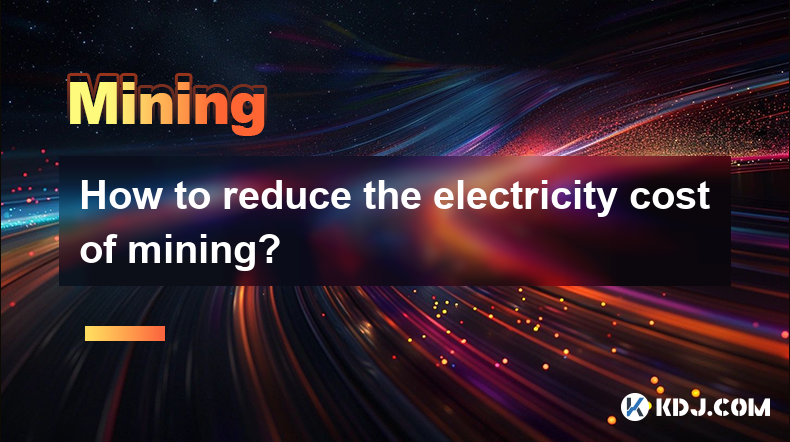
How to reduce the electricity cost of mining?
Apr 16,2025 at 08:42am
Mining cryptocurrencies, particularly Bitcoin, is an energy-intensive process that can lead to significant electricity costs. However, there are several strategies that miners can employ to reduce these expenses and make their operations more cost-effective. In this article, we will explore various methods to minimize the electricity cost of mining. Cho...
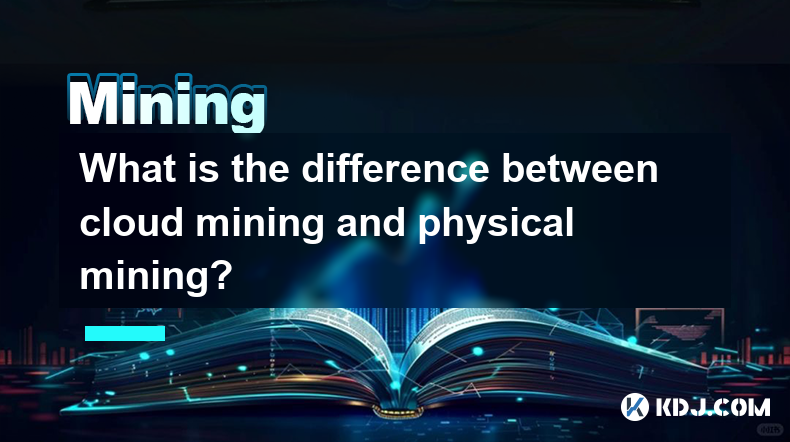
What is the difference between cloud mining and physical mining?
Apr 16,2025 at 01:49am
What is the difference between cloud mining and physical mining? In the world of cryptocurrencies, mining is the process by which new coins are generated and transactions are verified and added to the blockchain. There are two primary methods of mining: cloud mining and physical mining. Understanding the differences between these two approaches can help...
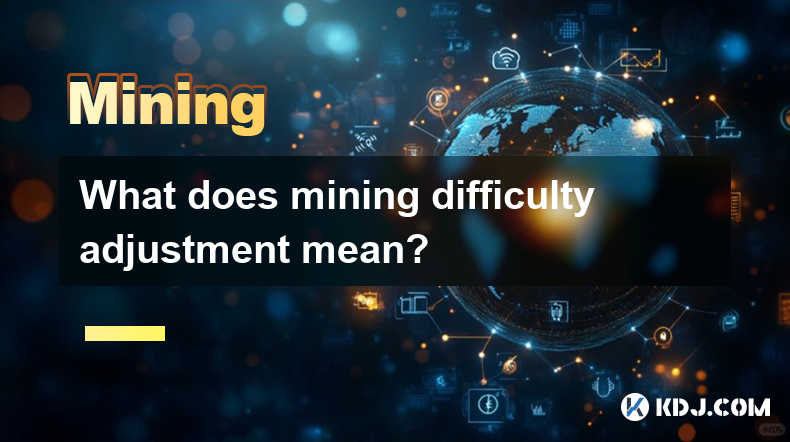
What does mining difficulty adjustment mean?
Apr 16,2025 at 12:42am
What does mining difficulty adjustment mean? Mining difficulty adjustment is a crucial mechanism in blockchain networks, particularly in Proof of Work (PoW) systems like Bitcoin. It ensures that the rate at which new blocks are added to the blockchain remains consistent, despite fluctuations in the total computational power (hash rate) of the network. T...
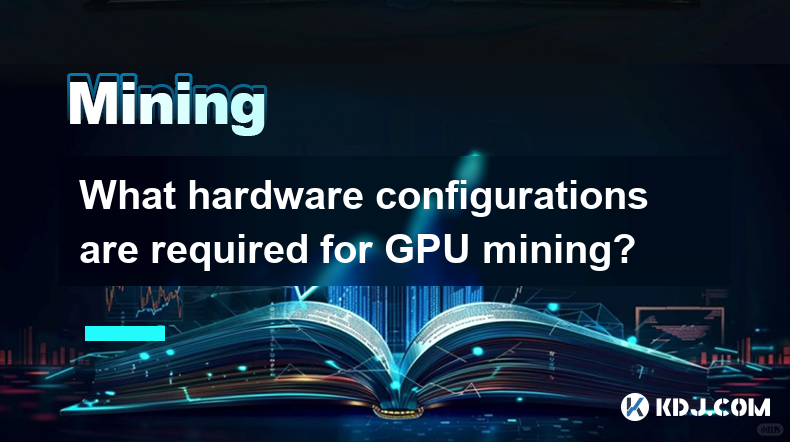
What hardware configurations are required for GPU mining?
Apr 16,2025 at 09:21am
GPU mining has become a popular method for cryptocurrency enthusiasts to mine various cryptocurrencies, such as Ethereum, Ravencoin, and others. To successfully engage in GPU mining, it is essential to understand the hardware configurations required to maximize efficiency and profitability. This article will delve into the specifics of what you need to ...
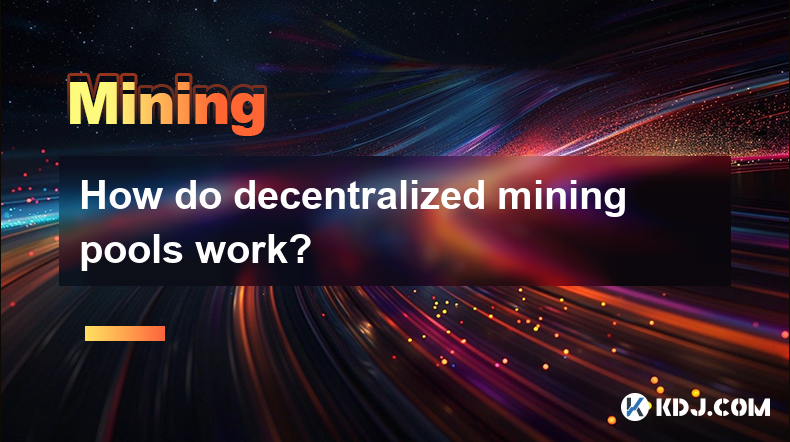
How do decentralized mining pools work?
Apr 16,2025 at 05:42am
Decentralized mining pools represent a significant evolution in the world of cryptocurrency mining, offering a more democratic and transparent approach compared to traditional centralized pools. In this article, we will explore the mechanics of decentralized mining pools, their benefits, and how they operate within the cryptocurrency ecosystem. What are...
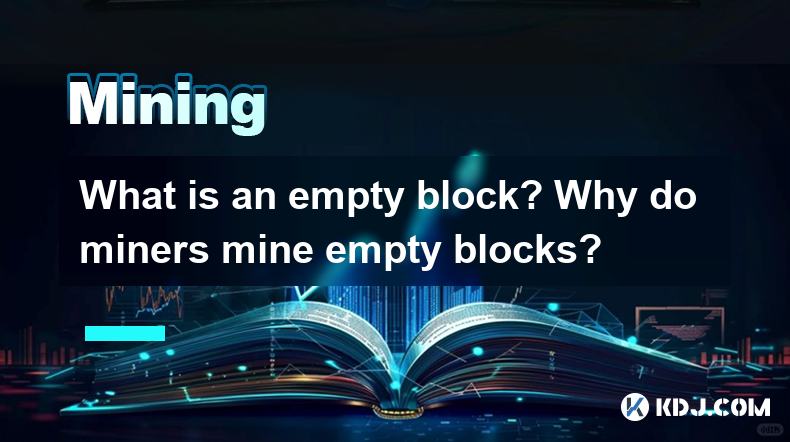
What is an empty block? Why do miners mine empty blocks?
Apr 16,2025 at 01:28am
What is an Empty Block?An empty block in the context of blockchain technology, particularly in cryptocurrencies like Bitcoin, refers to a block that contains no transactions other than the coinbase transaction. The coinbase transaction is a special transaction in which new bitcoins are generated and awarded to the miner who successfully mines the block....

How to reduce the electricity cost of mining?
Apr 16,2025 at 08:42am
Mining cryptocurrencies, particularly Bitcoin, is an energy-intensive process that can lead to significant electricity costs. However, there are several strategies that miners can employ to reduce these expenses and make their operations more cost-effective. In this article, we will explore various methods to minimize the electricity cost of mining. Cho...

What is the difference between cloud mining and physical mining?
Apr 16,2025 at 01:49am
What is the difference between cloud mining and physical mining? In the world of cryptocurrencies, mining is the process by which new coins are generated and transactions are verified and added to the blockchain. There are two primary methods of mining: cloud mining and physical mining. Understanding the differences between these two approaches can help...

What does mining difficulty adjustment mean?
Apr 16,2025 at 12:42am
What does mining difficulty adjustment mean? Mining difficulty adjustment is a crucial mechanism in blockchain networks, particularly in Proof of Work (PoW) systems like Bitcoin. It ensures that the rate at which new blocks are added to the blockchain remains consistent, despite fluctuations in the total computational power (hash rate) of the network. T...

What hardware configurations are required for GPU mining?
Apr 16,2025 at 09:21am
GPU mining has become a popular method for cryptocurrency enthusiasts to mine various cryptocurrencies, such as Ethereum, Ravencoin, and others. To successfully engage in GPU mining, it is essential to understand the hardware configurations required to maximize efficiency and profitability. This article will delve into the specifics of what you need to ...

How do decentralized mining pools work?
Apr 16,2025 at 05:42am
Decentralized mining pools represent a significant evolution in the world of cryptocurrency mining, offering a more democratic and transparent approach compared to traditional centralized pools. In this article, we will explore the mechanics of decentralized mining pools, their benefits, and how they operate within the cryptocurrency ecosystem. What are...

What is an empty block? Why do miners mine empty blocks?
Apr 16,2025 at 01:28am
What is an Empty Block?An empty block in the context of blockchain technology, particularly in cryptocurrencies like Bitcoin, refers to a block that contains no transactions other than the coinbase transaction. The coinbase transaction is a special transaction in which new bitcoins are generated and awarded to the miner who successfully mines the block....
See all articles























































































